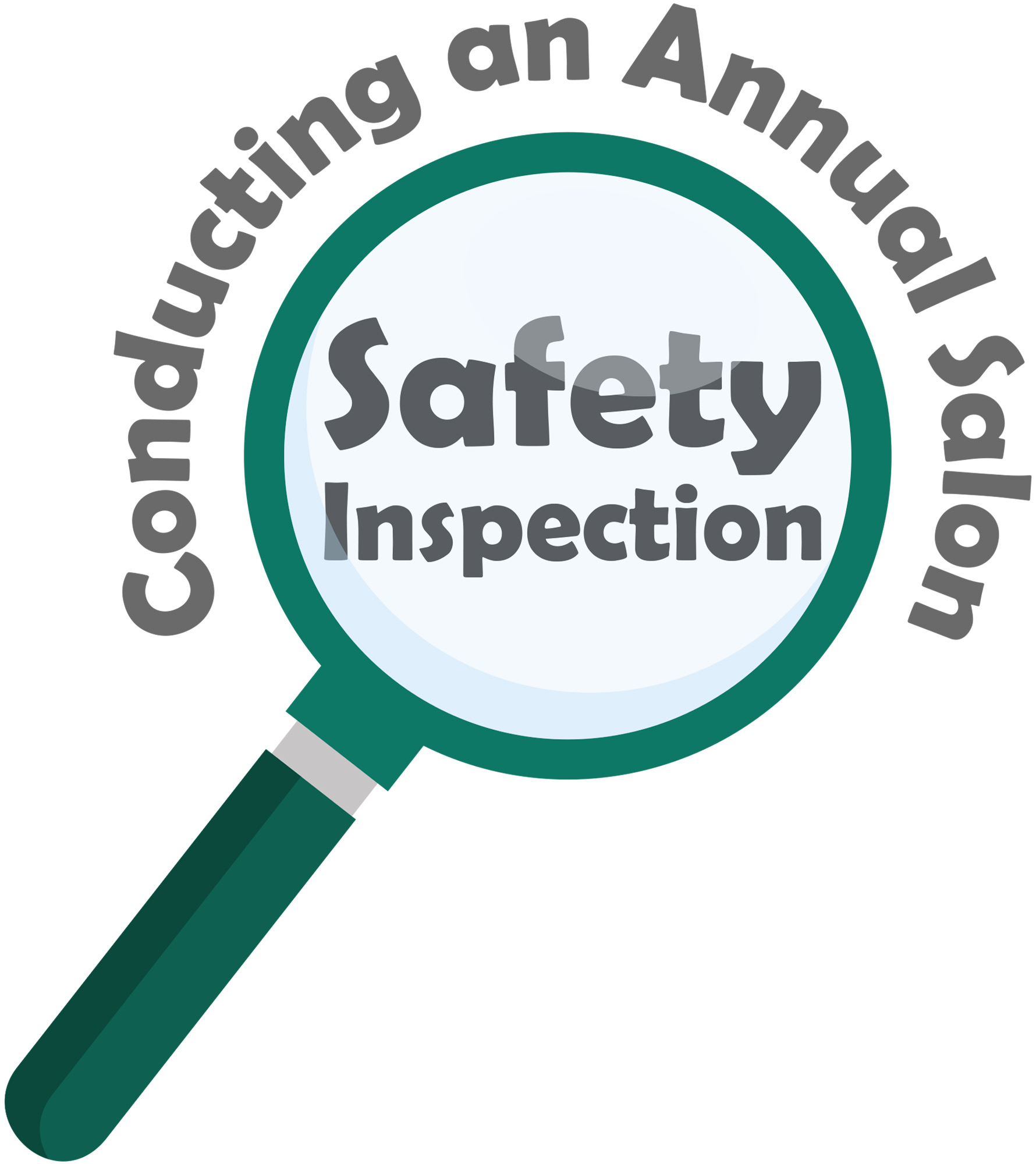
by Daryl Conner
Day in and day out, we become so accustomed to our work environment that sometimes we miss seeing things we should be paying attention to. It can be easy to “turn a blind eye” to our surroundings, ignoring things that need our attention. However, this can lead to safety issues.
 ne relatively simple way to avoid this is to choose one day a year to perform an annual safety review of our workplace. The first time you do it, be sure to take good notes. The notes can then be turned into a form on your computer that can be easily used as a comprehensive checklist in the future.
ne relatively simple way to avoid this is to choose one day a year to perform an annual safety review of our workplace. The first time you do it, be sure to take good notes. The notes can then be turned into a form on your computer that can be easily used as a comprehensive checklist in the future.
In order to really make sure you don’t miss anything, do a walk-through of the entire operation, pretending you have never seen the place before. Imagine being an inspector there for the first time and looking at everything from the vantage point of an impartial observer with the goal of safety on your mind.
Of course, you will need to modify your walk-through depending on the layout of your business, but here are some examples of areas to look at, starting with the exterior and then moving inside:
- Parking area. Is there uneven pavement, trip hazards or low spots that might become icy in cold weather?
- Walkway. Is it smooth and even? Is it easily accessible to people who might have difficulty walking?
- Lighting. Are there lights for those winter nights when dark comes way too early? If so, are the bulbs in good working order?
- Entrance. Are stairs or ramps in good condition? How about handrails? Are there doormats or uneven spots that might cause someone to trip or slip?
- Entry door. Is the door handle smooth and safe to operate? Is there clutter or places a dog’s leash might become snagged? Does the door close securely so no pets can make an unplanned exit?
- Lobby or check-in area. Is the ceiling in good repair? Are there things hung or placed where a bouncy animal might knock them over? Is there anything a small child or animal could get into that might be dangerous?
- Bathing space. Are all surfaces of the tubs smooth and in good repair? Tub grates should be checked to ensure there are no rough or sharp edges so dogs’ toes or claws cannot get caught in the grate. If the tub doesn’t have a grate, is there some type of non-skid surface on the bottom? Look under the tub for stress cracks and check the hardware that keeps the legs attached for rust or other problems. Also look at the plumbing to ensure there are no leaks or drips.
- Floors. What do you do to keep the floors dry? Wet floors are a slip hazard and should be monitored at all times.
- Shampoo and other supply storage. Is the shelving safe and sturdy? Heavy products should be kept low and lighter objects stored high.
- Electrically powered tools. Do any of the cords have worn or abraded spots? Do any plugs show signs of being damaged or melted? Electrical cables and plugs can become damaged over time, presenting shock or fire hazards.
- Cords and hoses. Look at where cords and hoses from clippers, vacuums and dryers are stored. Are there any on the floor that could be a trip hazard? Find a clever way to stow them so that they are up off the floor, even during use.
- Grooming tables. Is the top’s underside structurally sound and the non-skid top safely glued? How about the molding around the edges? It must be smooth and secure to prevent a dog or groomer from injury.
- Drying area. Is the area free of hair? Consider removing the electrical outlet covers, vacuuming the hair out and replacing the covers snugly. Dog hair blown around by high-velocity dryers somehow works its way in there.
- Pet dryers. Is there hair packed inside the case of the dryer? If possible, remove the case and vacuum any hair you find, as this is a fire hazard. If you have cage dryers, are the knobs and timers fully functional? Are dryers used near the bathing area plugged into GFCI outlets?
- Clutter. Are there any unnecessary objects on the floors that can cause tripping? How about objects on windowsills, counters and shelves? This can create places for dirt and hair to build up, presenting a fire hazard and looking messy.
- Groomer’s PPE. Do all groomers have and use personal safety tools like protective aprons, goggles, hearing protection and masks? Note what needs to be replaced or refreshed.
- Fire extinguishers. Are fire extinguishers within “use by” date and easily accessible?
- First Aid kit. Is the first aid kit where it should be? Are you low on often-used supplies like Band-Aids?
- Crates or dog-holding areas. Are surfaces smooth and free of rust, peeling finishes and rough edges? If there are cage grates, they should be removed and carefully examined from all angles.
- Anti-fatigue mats. Are there any worn or uneven surfaces that could cause falls?
Your workspace will undoubtedly have other areas that deserve a thorough annual inspection, and once you get started looking around with “inspector” eyes, you will find them. Be sure to take notes of what areas need further attention. An annual safety inspection is a small investment to ensure a safe work environment for both groomers and pets.
